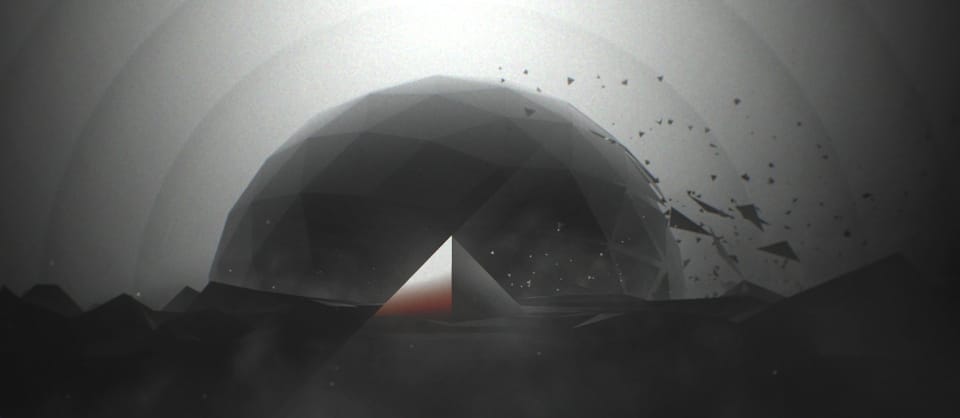Ekko’s pretty spaces will let you explore the butterfly effect

Rob Milus isn’t saying much, but it’s enough. He’s working on a game called Ekko with fellow game maker Peter Dijkstra, one that he’s only showed glimpses of on Twitter—abstract shapes floating across a space lit by a distant sun. I wanted to find out more, a lot more, but he only responded with a few sentences and a finger raised to his lips. “Shhhh.”
Of what Milus told me and that I can share with you, it is that Ekko started off as an interest in the theory of the butterfly effect: “how a small change in one place can evolve and cascade into something much more vast later on,” in his words. Ekko is Milus’s way of creating a format to explore that theory, having players interact with abstract structures and environments in order to discover hidden relationships between various elements. It’s due to this process of discovery that Milus won’t share much about Ekko before it’s finished and out into the world—to do much more would be to go against the point of the game.
Little electronic blips chime in when the player unites shapes
Rather than playing a character in Ekko, players will have an omnipresent role, experiencing its strange ecosystem from a distanced view. From there, players have the ability to influence and mold the space while piecing together small fragments into powerful structures. This might be drawing a line between floating triangles to connect them—Milus showed me this example, and when the triangles were connected, they were sucked into a single point as if it were a black hole to then become a single hexagon.
“As you build up a symphony of these structures, you can use them to set off vast explosive chain-reactions,” Milus said. “Each environment contains different hazards and which forces you to rethink your approach as you make your way through the world.”

Milus and Dijkstra also worked with sound designer Martin Kvale on Ekko. He’s provided suitably spacey soundscapes where strings swell and warm notes float across the ether. All of which seems geared towards coaxing the player into a state of chill and deep contemplation as they play the game. Little electronic blips chime in when the player unites shapes—as satisfying as seeing a tick in a school workbook. But there are also more violent sounds, such as lightning crashes and sand blasts during storms that replace the gentler horizons at some point. In these scenes, those pleasant blips become the hard sounds of shapes colliding at high speed—wet thwacks rather than a pleasing duh-link.
Sound is obviously highly important to Ekko as it is tasked with not only helping to guide the player in their exploratory gestures, but giving a sense of greater life beyond the screen; a world for the sun to shine upon, for the storms to rage across. Milus said that Ekko is still in early production as they’re testing out things with its design still, but from what I’ve seen and heard, it is already a confident project with plenty of intrigue to boot.
Follow Rob Milus on Twitter and check out Ekko’s website for updates on the game. Ekko will be launch for Windows and Mac but will also come to iOS.




